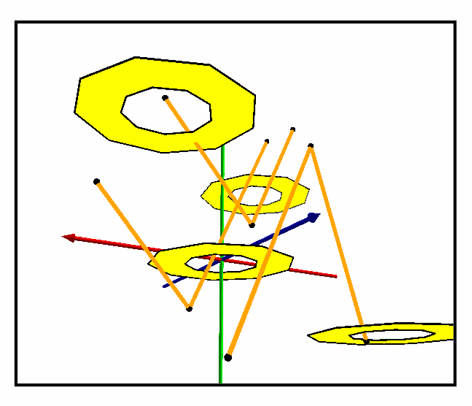 |
This document is archived and information here might be outdated. Recommended version. |
 |
This document is archived and information here might be outdated. Recommended version. |
| ArcObjects Help for .NET developers > ArcObjects namespaces > Geometry > ESRI.ArcGIS.Geometry > Interfaces > IR > IRelationalOperator3D Interface > IRelationalOperator3D.Disjoint3D Method (ArcObjects .NET 10.5 SDK) |
Indicates if the two geometries share no points in common. Negate this result to compute the Intersect relation.
[Visual Basic .NET] Public Function Disjoint3D ( _ ByVal pOther As IGeometry _ ) As Boolean
[C#] public bool Disjoint3D ( IGeometry pOther );
[C++]
HRESULT Disjoint3D(
IGeometry* pOther,
VARIANT_BOOL* pbDisjoint
);
[C++]
Parameters pOther
pOther is a parameter of type IGeometry pbDisjoint [out, retval] pbDisjoint is a parameter of type VARIANT_BOOL
Determines whether two z aware geometries intersect in 3D space. Two geometries are disjoint if their intersection is empty. Two geometries intersect if disjoint is FALSE.

public static void TestIntersection()
{
IGeometry polylineGeometry=GetPolylineGeometry();
IGeometry polygonGeometry=GetPolygonGeometry();
IRelationalOperator3D relationalOperator3D=polylineGeometry as IRelationalOperator3D;
bool intersect=!(relationalOperator3D.Disjoint3D(polygonGeometry));
//intersect = true
}